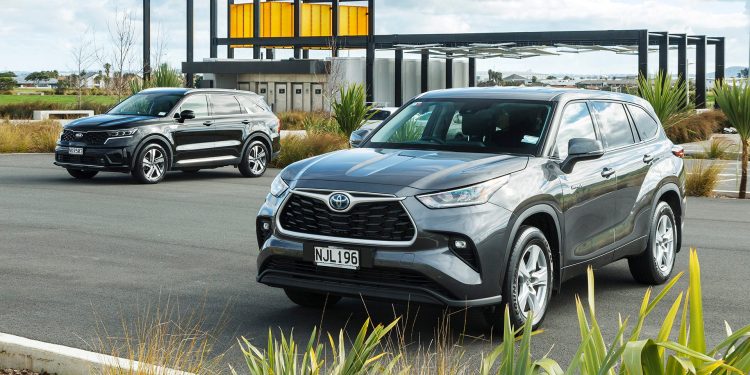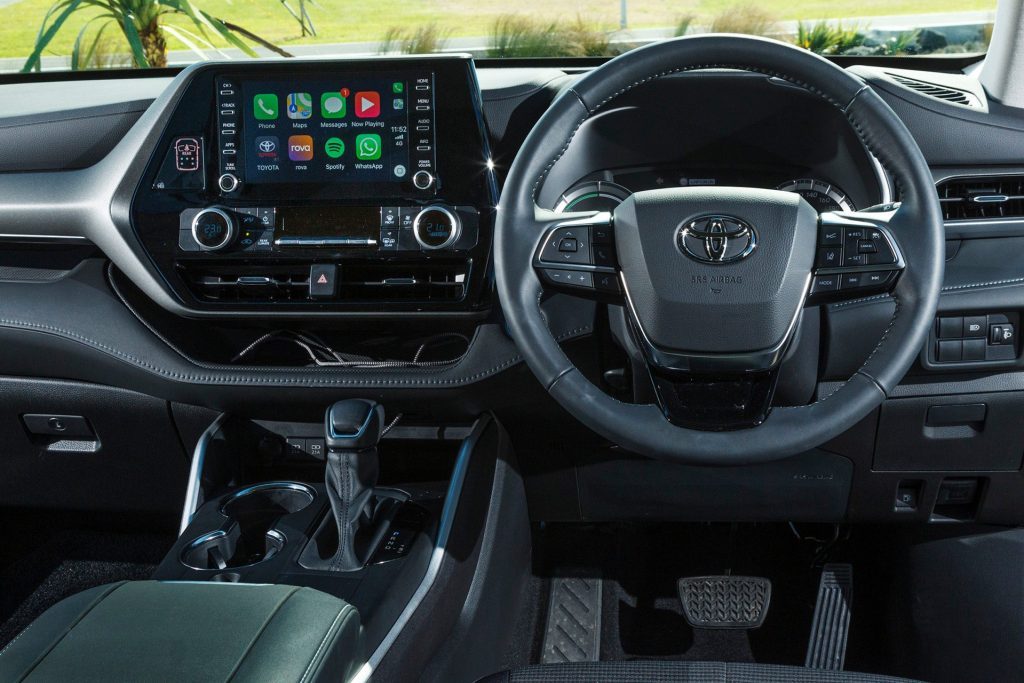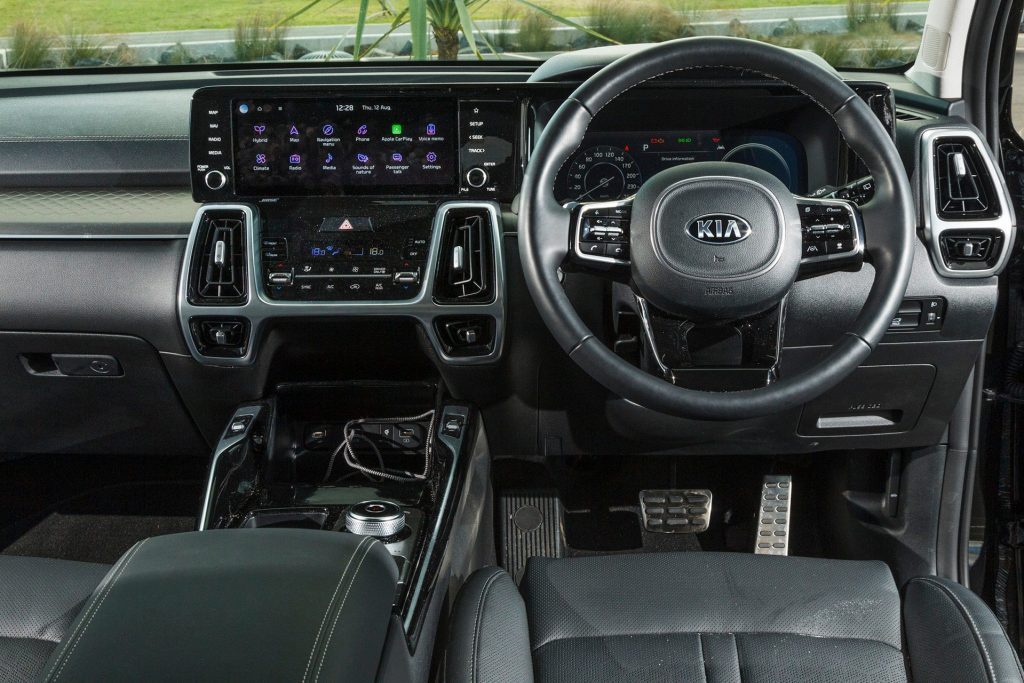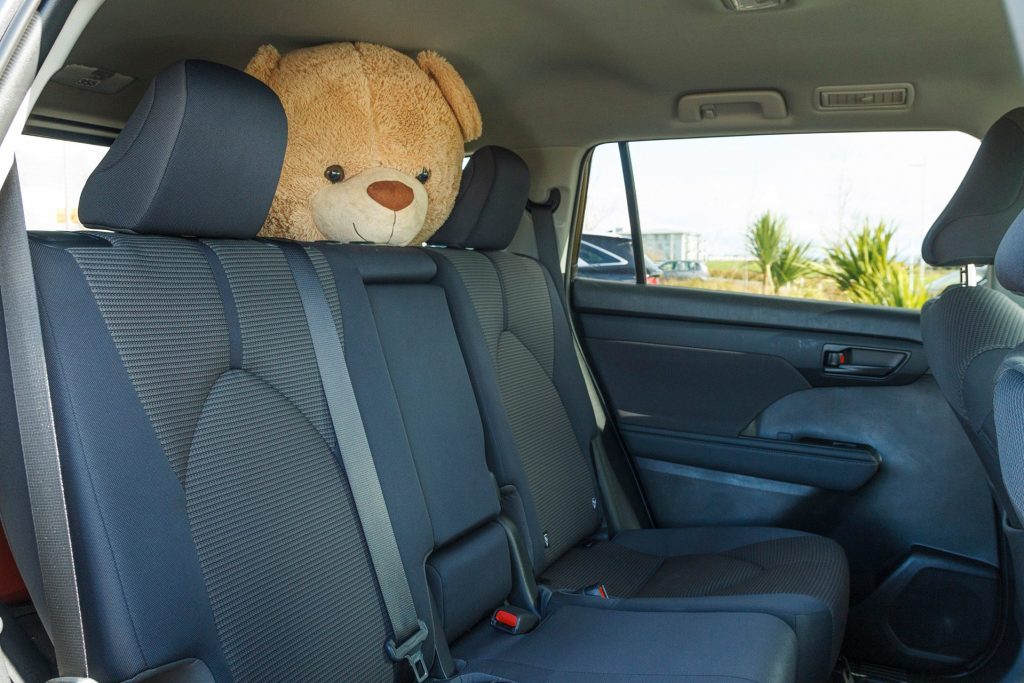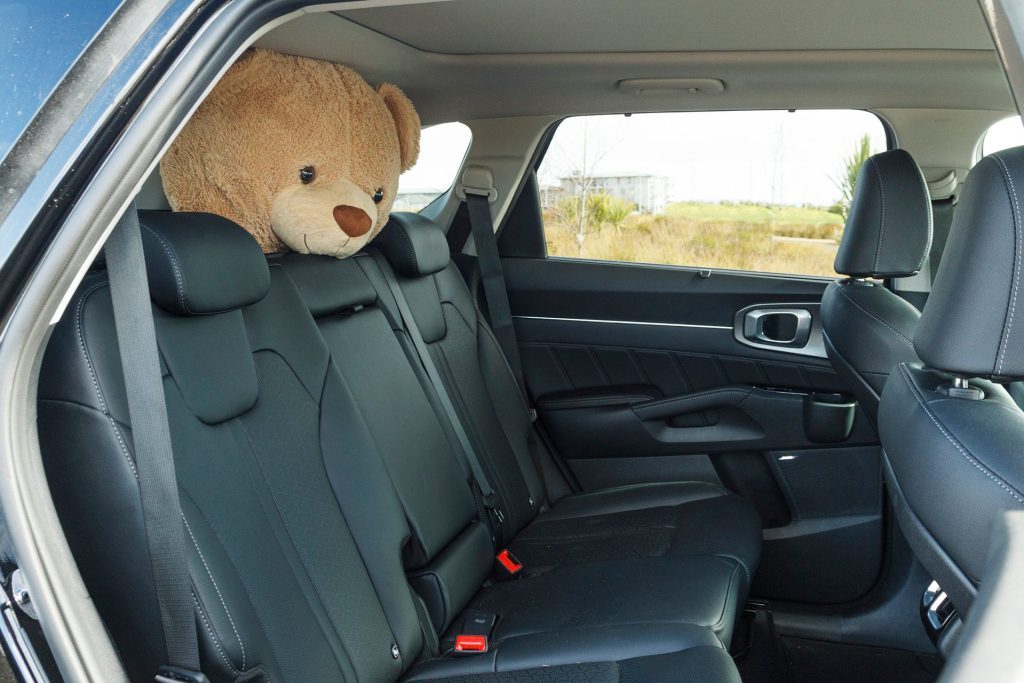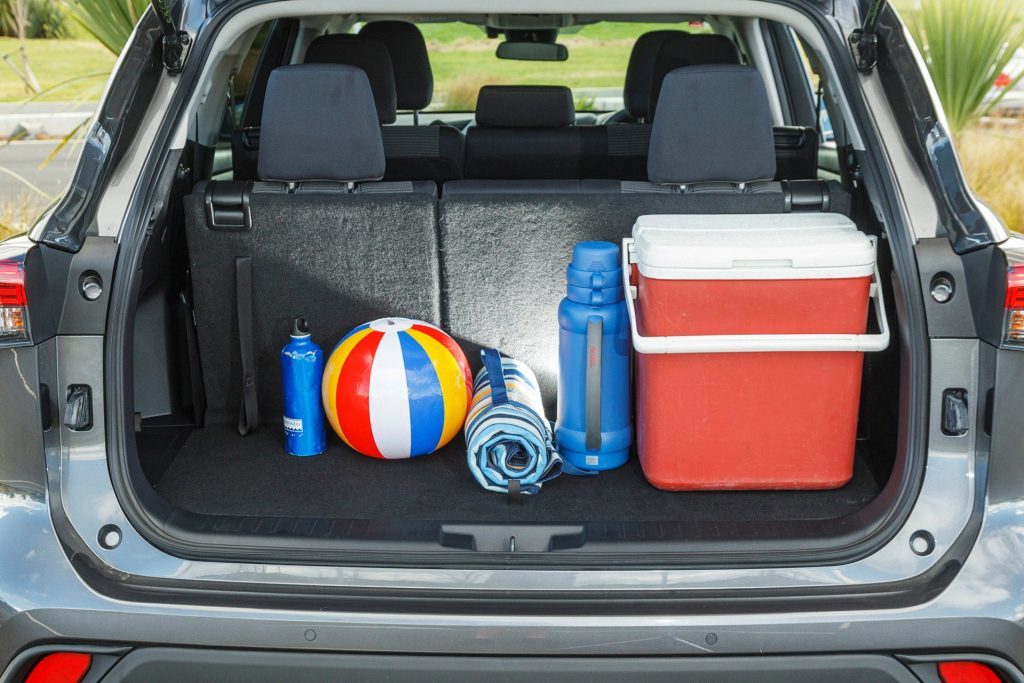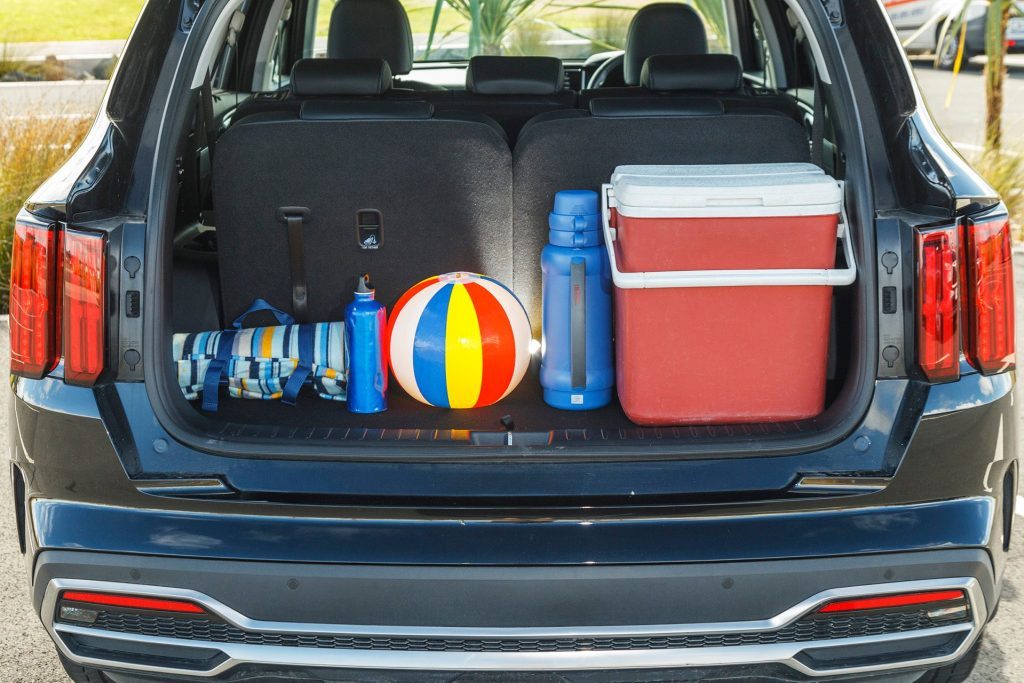2021 Kia Sorento HEV AWD Premium vs Toyota Highlander GXL Hybrid comparison
Words: Kyle Cassidy | Photos: Tom Gasnier
Seven-seat SUVs are made for family life and now there are options that don’t hoover up so much gas. We check out the hybrid versions of the Kia Sorento and Toyota Highlander.
You may have heard the large car is no longer a thing in NZ, but really they’ve just morphed into larger SUVs. And as family cars, they really work. You can fit a whole lot more bods in a seven-seater SUV and take more things along with you. With the design brief for these shaped by American market requirements, the primary powertrain in this segment has often been a large, petrol V6. So not great for household budgets as gas prices look set to remain stubbornly high, nor a corporate’s overall emissions profile for those buying them as a company car. The Koreans have had diesel options but recently Kia has introduced the first hybrid into the segment with the Sorento in both ‘self charging’ and plug-in guises. Toyota’s Highlander is popular here and in its fourth generation now also offers the benefit of hybrid drive. Given these two are relative newcomers, we’ve lined them up to see which does the family business best.
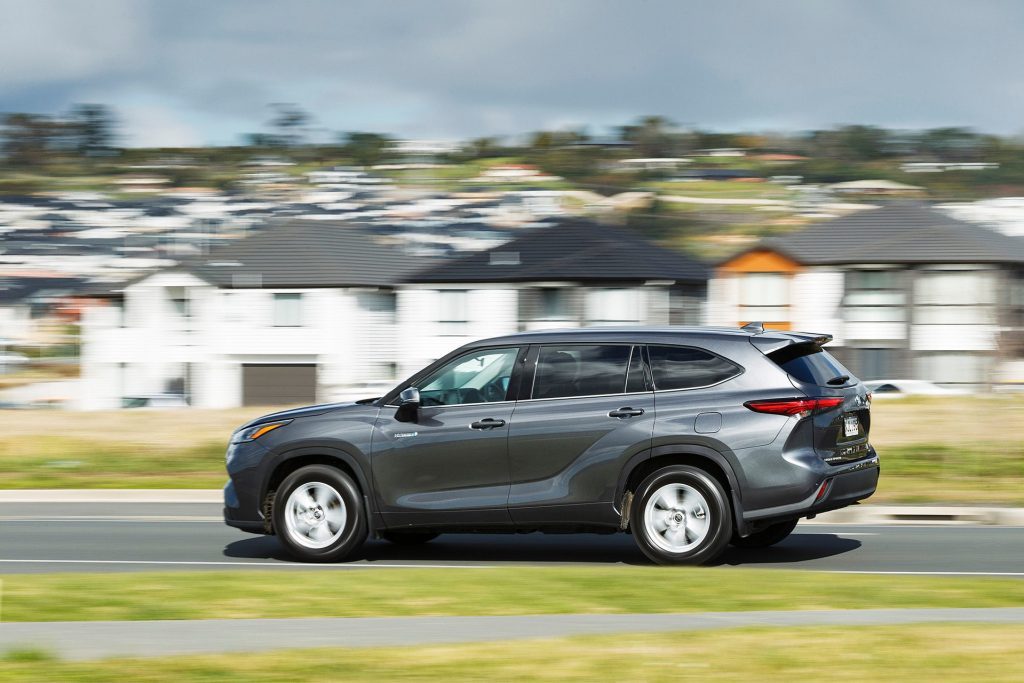
Highlander all new
Renewing for the first time since 2013, the 2021 Highlander sits on a version of the firm’s TNGA platform. Compared with the outgoing model, it’s 60mm longer, both overall and in the wheelbase. As such, Toyota says the new model offers more cabin space with increased boot capacity.
Initially Toyota NZ announced an all-hybrid line up but subsequently added a couple of V6 options due to ‘consumer demand from fleets’. Of the orders so far, 90 percent are for the more sensible hybrid.
The engine is a 2.5-litre Atkinson-cycle four cylinder while the hybrid synergy drive incorporates two electric motors, one on the rear enabling eAWD, i.e., there’s no driveshaft involved. This is similar in concept to the RAV4 hybrid set-up but with a larger drive motor the Highlander makes 184kW in total. There’s a nickel metal hydride (NiMH) battery under the back seat, so there’s no difference in luggage space or seating versatility between the hybrid and V6 versions. And it can tow the same 2000kg braked as well.
There are three hybrid variants, kicking off with the GXL ($63,990) which has cloth trim and manually adjusted seats and the like but gains a smart key, multizone air conditioning, five USB ports and an eight-inch touchscreen with Bluetooth, CarPlay and Android Auto.
The Limited ($66,990) gets powered and heated chairs with (very) fake leather and sat nav while the ZR ($74,990) adds fluff like JBL sounds, a glass roof, and head-up display. All have the usual Toyota safety suite (AEB, lane keeping, radar cruise, etc) which now includes road sign recognition and emergency steering and intersection turn assistance.
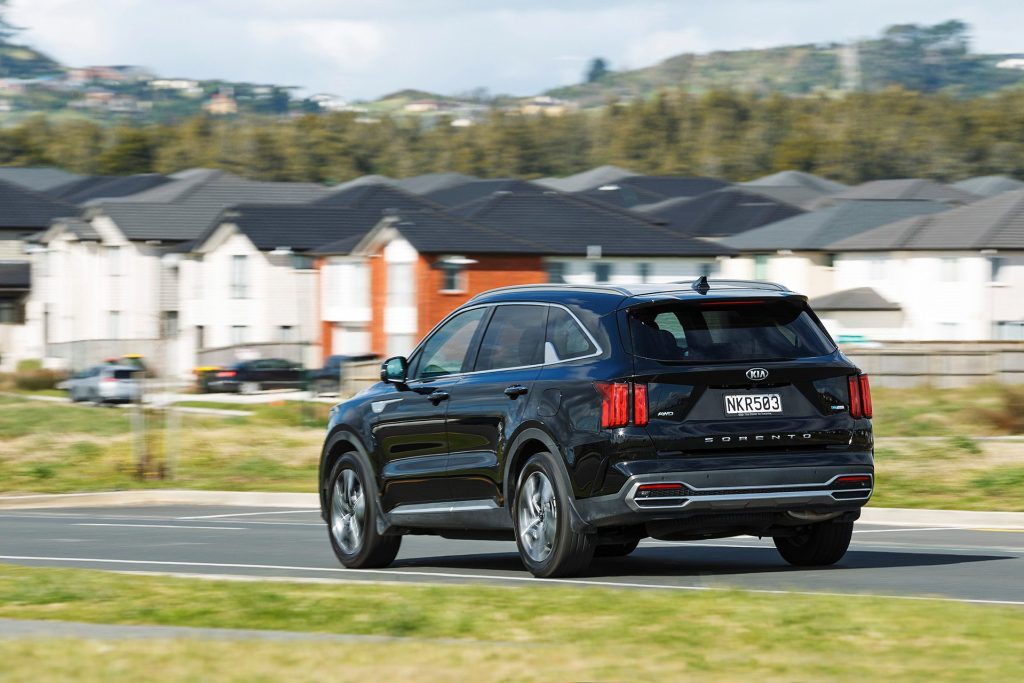
Sorento new(ish) too
Sorento debuted last year and it too rides on a new platform with a longer wheelbase to provide more interior space for occupants. The hybrid model uses a 1.6 turbopetrol matched to a six-speed auto with a 44kW motor sandwiched in between so the engine and motor work in parallel fashion to make 169kW and 350Nm. The motor draws from a 1.49kWh lithium-ion polymer battery pack placed under the floor up front so as not to impinge on interior space.
Kia’s hybrid can be had in 2WD guise with AWD a $2k premium. The EX grade is our recommendation, starting at $63,990, whereas the AWD Premium pictured here is $82,990. If you have the coins burning a hole in the pocket, go for it, though the $17k premium seems OTT for the extras it delivers. We say the EX is very well specified for the ask with a replete active safety menu, while besting the similarly-priced Highlander’s spec with the likes of leather trim, a powered driver’s seat, bum warmers, a 10-inch screen with integrated sat nav and a charge pad.
The Kia is down a little on tow capacity at 1650kg braked but Sorento is covered by a five-year/100,000km warranty and a four-year/40,000km service plan. Toyota offers fixed price servicing for the Highlander at $280 a pop. Meet your servicing requirements, and the Toyota warranty extends to five years and 150,000km. Toyota also includes all on-road costs in its price but there’s no room for bargaining.
How far between fill ups?
You’ll be keen on the hybrids for their consumption, or lack thereof. Officially the Sorento hybrid AWD is rated at 6.2L/100km, the Highlander at 5.6L/100km. We found them to be fairly similar overall, the Toyota settling on 6.1 in our hands, the Sorento at 6.5. They also drive much the same, starting off under electric propulsion before the engines chime in to boost things along. Both have an equal amount of easy urge at town speeds and, once up to pace, the systems switch off the engine whenever possible to get around rather economically for such large vehicles. While all electric running is brief and sporadic, slow speed traffic flows and car park manoeuvres are handled by the motors. The Toyota’s e-CVT device makes for smoother progress, (the Highlander has a plusher ride too) and an EV mode button makes better use of the available electric running. But really you don’t have to overthink driving these to gain good economy; just enjoy the quick and easy torque mustered without excessive gas use. Each has a power meter in lieu of a tacho to show what the system is doing, and to keep a tab on economical driving practices.
While large enough to fit the family, they still work in the city and are easy enough to dock in your average supermarket car park. Both have decent active cruise gizmos, while the Sorento’s lane keeping function is annoying but can easily be switched off, just like the Toyota’s.
Driven with more verve, the Highlander’s softer gait delivers more roll in the bends. The steering works well though, even with a sense of what’s happening. The power is either on or off in that typical e-CVT manner, but it’s rather responsive, especially in Sport mode. And it’s quick on the overtake where the powertrain is smartly into its stride when you gas it. At higher speeds, the brakes have a spongy feel to them, which you can blame on the initial regen phase.
The Sorento suffers more road noise and the ride’s not as settled on the highway or in the city. But this goes better in the bends, the roll more controlled, the steering more positive, the damping superior, and so too the overall chassis balance. With its six-speed auto, the powertrain response is almost ‘normal’ but the turbo engine will drink more when pressed.
Versatile then?
Each has plenty of rear seat space, being wide enough to fit three lean teens across the back. The pews have the usual adjustments, able to slide forward to make room for third row passengers, or pushed aft so you can stretch out and recline the seat back. And there are enough drink holders and charge ports (Sorento has more in total) to service thirsty and device-mad passengers. Both have two Isofix points in the middle row.
The rearmost seats are more suited to kids/teens than adults, though the latter can fit if everyone else makes a decent compromise on legroom.
There is a smidge more passenger space overall in Sorento. With all seats up, there’s more luggage room in the back of Highlander, while with the third row folded its hold is bigger with greater width.
Up front, they have a fairly conventional and similar cabin layout, but the Kia has far more styling panache, and that goes for the sheet metal outside too. You might sit on cloth trim in the entry-level Highlander, but the seat sure is comfy. We prefer the fabric to Toyota’s attempt at synthetic leather, and powered adjustment you really can live without.
We like the storage in the Highlander, the well placed cup holders and the little shelf for a cell phone to rest. While there is no charge pad, it has well sited USB plugs. While the build is hard to fault in both, and the touch points are sorted, everything is black and grey and blah in the Toyota, where the Kia has a few more bright spots.
You’ll get a heated, leather-trimmed seat in the Sorento though it’s a tad firm. You’ll hate the bong, bong, bonging every time you start the Kia, which you don’t seem to be able to turn off. The Kia’s larger screen is brighter with more functionality though.
Hard to split them
It’s difficult to pick a clear winner here. The Highlander is more refined and marginally better on gas, the Kia better to drive. The Toyota has a slight edge in overall interior room when taking into account it’s extra luggage space, the Sorento more style. We like the Sorento EX as an overall value proposition, being better specified for the money asked, with a good aftersales package, so it gets the nod by the slimmest of margins.
| Model | Kia Sorento HEV AWD Premium |
| Price | $82,990 |
| Engine | 1598cc, IL4, T,DI, 169kW/350Nm |
| Drivetrain | 6-speed auto, on demand AWD |
| Fuel Use | 6.2L/100km |
| C02 Output | 141g/km |
| 0-100km/h | 8.80sec |
| Weight | 2003kg |
| Model | Toyota Highlander GXL Hybrid |
| Price | $63,990 |
| Engine | 2487cc, IL4, EFI, DI, 184kW/n.a.Nm |
| Drivetrain | e-CVT, e-AWD |
| Fuel Use | 5.6L/100km |
| C02 Output | 128g/km |
| 0-100km/h | 8.12sec |
| Weight | 2035kg |


